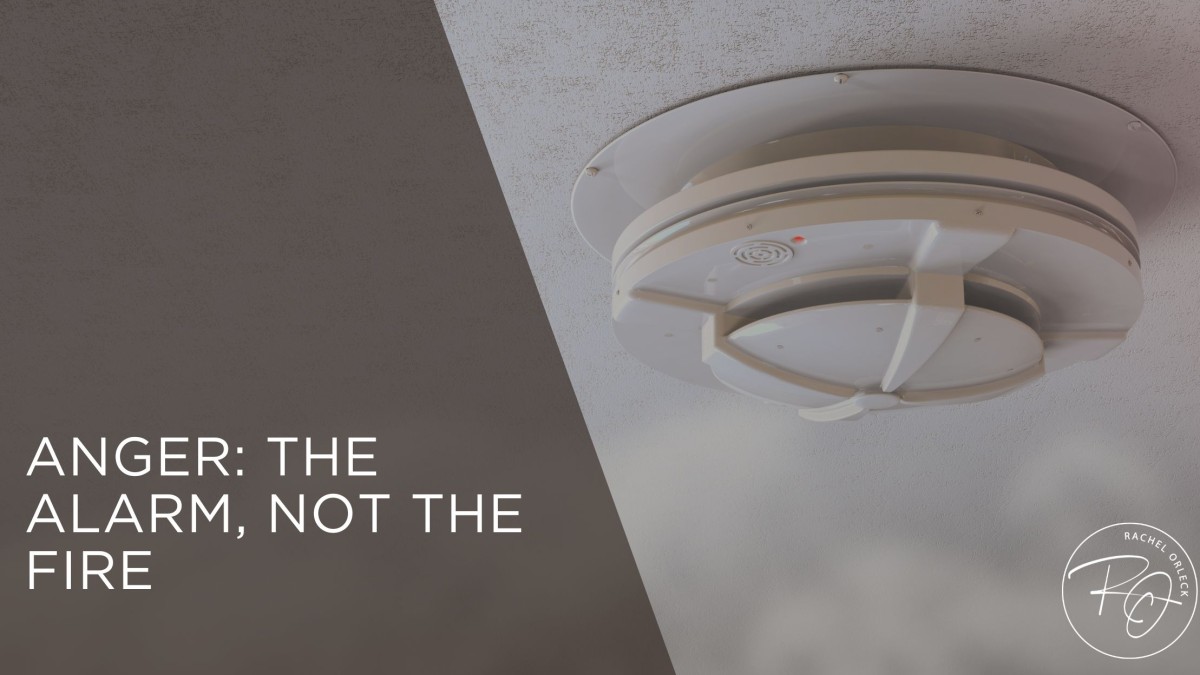Anger: The Alarm, Not the Fire

Anger isn’t the fire—it’s the alarm. Learn how to see anger as a signal, not a threat, and use it to deepen connection instead of fueling distance.
We’ve all been told a lie about anger: that it’s the fire burning down your relationship. That if you get too angry—or if your partner does—the connection is doomed. But here’s the truth: anger itself isn’t the fire. Anger is the alarm. Loud, sometimes jarring, but ultimately a signal that something important needs attention.
The problem isn’t anger. The problem is how we interpret and respond to it.
Read or Listen below.
When Anger Shows Up, Both Sides Feel Threatened
If you’re the one who gets angry, it can feel like you’re fighting for the relationship: fighting to be heard, fighting for change, fighting because you care.
But if you’re on the receiving end, that same anger can feel like an attack. Your nervous system hears danger—so you shut down, withdraw, or push back harder.
This mismatch creates a painful cycle. The angry partner feels dismissed or silenced. The partner on the receiving end feels unsafe or overwhelmed. Neither feels understood.
Why Suppressing Anger Doesn’t Work
So many of us were taught that “good partners” don’t get angry. That if we keep it together, swallow our frustration, or put on a calm face, things will go smoother. But here’s what really happens: when anger is stuffed down, it doesn’t disappear. It turns into resentment. And resentment is what poisons relationships from the inside out.
Dismissing or minimizing anger also reinforces painful stories. Stories like: I’m too much. My feelings don’t matter. If I show up fully, I’ll be abandoned. These beliefs don’t just hurt you—they corrode trust between you and your partner.
Anger as a Nervous System Signal
From a nervous system perspective, anger is a cue of boundary violation or disconnection. It’s not proof that your relationship is broken—it’s your body saying, Pay attention.
Think of anger like the smoke detector in your kitchen. Annoying? Sure. Loud? Absolutely. But would you ever rip it off the wall and pretend the smoke isn’t there? No—you’d investigate the source. Anger works the same way. It’s not the problem. It’s pointing to the problem.
The Difference Between Threat and Signal
Here’s where couples get stuck. When anger is treated as a threat, the responses sound like:
- “Calm down or I won’t listen.”
- “You’re overreacting.”
- Silence, withdrawal, or walking away.
But when anger is treated as a signal, the responses shift:
- “Something feels really off—what are you needing right now?”
- “I can hear this is important to you.”
- “Let’s slow this down so I can really understand.”
The first set fuels shame and distance. The second creates space for curiosity, boundaries, and repair.
A New Way to Respond to Anger
You don’t have to wait until anger is gone before closeness can return. In fact, demanding that your partner “get calm” before you’ll engage often escalates the spiral. What works better is helping anger find its grounding through co-regulation. That might look like:
- Taking a breath and orienting yourself before responding.
- Naming the anger without judgment: “I can feel how frustrated you are. I want to understand.”
- Setting boundaries around behavior: “I want to keep talking, but not if we’re yelling.”
This isn’t about excusing harmful behavior—it’s about separating the signal (anger) from the delivery (tone, words, volume). You can acknowledge the signal without tolerating harmful delivery.
What Secure Love Looks Like with Anger
In relationships that have built trust, anger doesn’t have to mean danger. It becomes another data point: “Something matters here. Something needs tending.”
Instead of shutting down or inflaming the fire, both partners can treat anger like an entry point into understanding. Secure love says: You can bring your full self—even the angry parts—and I won’t vanish. I’ll meet you there with boundaries and care.
Passion doesn’t die when safety shows up. Passion grows deeper roots because you no longer have to fear the alarm.
A Reflection to Try
The next time anger flares—yours or your partner’s—pause and ask yourself:
- Am I treating this as a threat to escape?
- Or am I treating this as a signal to explore?
That single reframe interrupts the automatic shame spiral and creates just enough space for curiosity. And curiosity is what transforms anger from an isolating force into a connecting one.
Final Thoughts
Anger doesn’t mean your relationship is doomed. It means something important is asking to be seen. When you learn to treat anger as the alarm, not the fire, you reclaim its power as a messenger. And that messenger is saying: Don’t miss me here. I matter.
If you’re tired of the cycle where anger leads to shame, withdrawal, or distance, remember this: you don’t have to banish anger to build secure love. You just need to listen differently.
 Rachel Orleck
Rachel Orleck 
